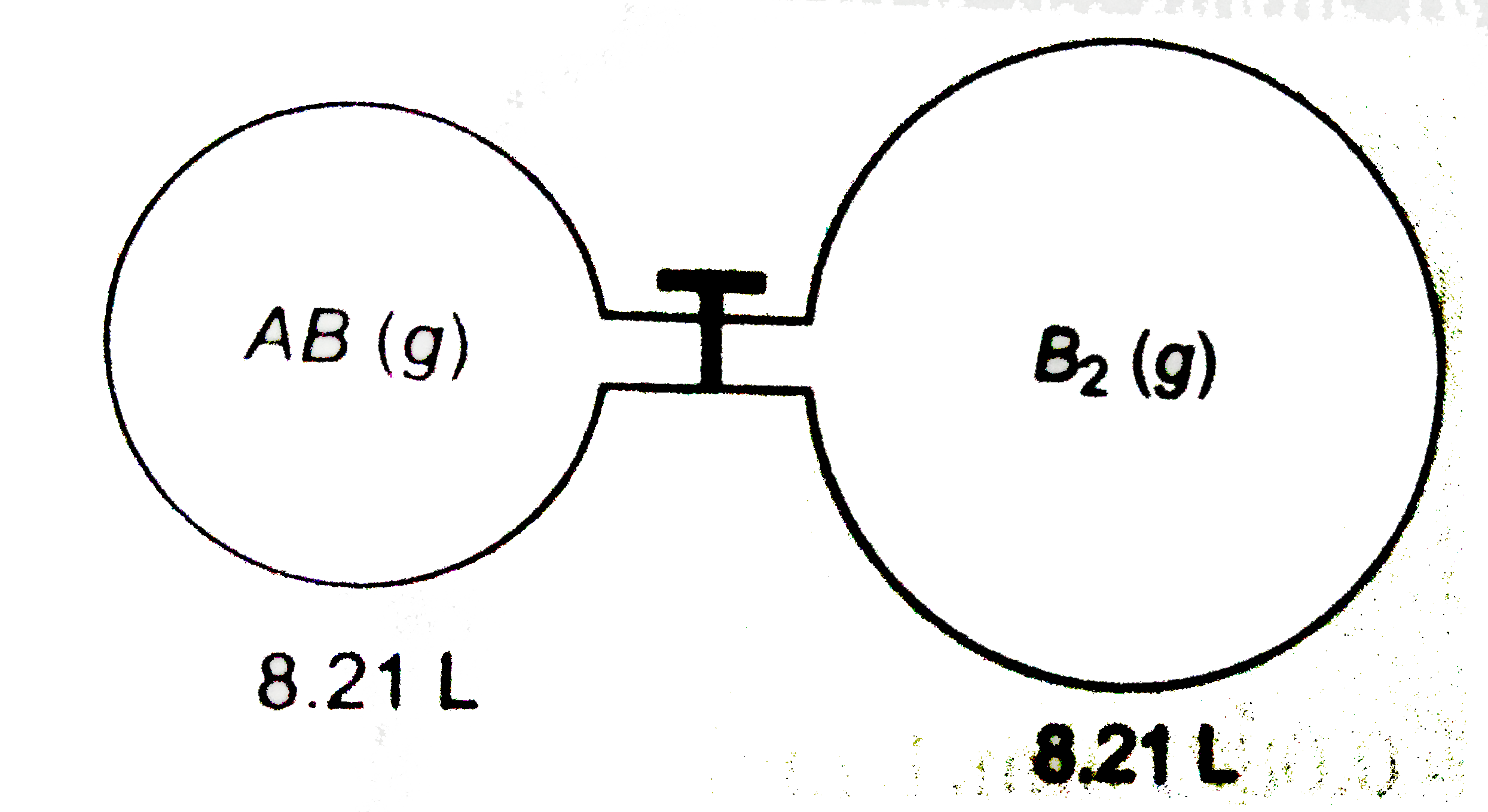N2 is found in a litre flask under 100kPa pressure and O2 is found in another 3litre flask under 20KPa pressure. If the two flask are connected, the resultant pressure is
310kPa
210kPa
420kPa
265kPa
The correct Answer is:D
To solve the problem of finding the resultant pressure when two flasks containing nitrogen (N₂) and oxygen (O₂) are connected, we can follow these steps:
1. Identify the Given Data:
- For N₂:
- Pressure (P₁) = 100 kPa
- Volume (V₁) = 1 L
- For O₂:
- Pressure (P₂) = 20 kPa
- Volume (V₂) = 3 L
2. Calculate the Number of Moles of Each Gas:
- Using the ideal gas equation:
n=PVRT
- For N₂:
n_{N₂} = \frac{P₁ \cdot V₁}{RT} = \frac{100 \, \text{kPa} \cdot 1 \, \text{L}}{RT}
- For O₂:
nO₂=P₂⋅V₂RT=20kPa⋅3LRT
3. Combine the Moles:
- The total number of moles when the flasks are connected is:
ntotal=nN₂+nO₂=100⋅1RT+20⋅3RT
- Simplifying:
ntotal=100+60RT=160RT
4. Calculate the Total Volume:
- The total volume (V_total) when the flasks are connected:
Vtotal=V₁+V₂=1L+3L=4L
5. Calculate the Final Pressure:
- Using the ideal gas equation again for the combined system:
Pfinal=ntotal⋅RTVtotal=(160RT)⋅RT4=1604=40kPa
6. Final Result:
- The resultant pressure when the two flasks are connected is 40 kPa.
- For N₂:
- Pressure (P₁) = 100 kPa
- Volume (V₁) = 1 L
- For O₂:
- Pressure (P₂) = 20 kPa
- Volume (V₂) = 3 L
- Using the ideal gas equation:
n=PVRT
- For N₂:
n_{N₂} = \frac{P₁ \cdot V₁}{RT} = \frac{100 \, \text{kPa} \cdot 1 \, \text{L}}{RT}
- For O₂:
nO₂=P₂⋅V₂RT=20kPa⋅3LRT
- The total number of moles when the flasks are connected is:
ntotal=nN₂+nO₂=100⋅1RT+20⋅3RT
- Simplifying:
ntotal=100+60RT=160RT
- The total volume (V_total) when the flasks are connected:
Vtotal=V₁+V₂=1L+3L=4L
- Using the ideal gas equation again for the combined system:
Pfinal=ntotal⋅RTVtotal=(160RT)⋅RT4=1604=40kPa
- The resultant pressure when the two flasks are connected is 40 kPa.
Topper's Solved these Questions
- STATES OF MATTERBOOK - A2ZCHAPTER - STATES OF MATTEREXERCISE - Kinectic Theory Of Gases, Maxwell Distribution Of Speed
45 Videos
- STATES OF MATTERBOOK - A2ZCHAPTER - STATES OF MATTEREXERCISE - Van Der Waals Gas Equation And Liquefaction Of Gases
35 Videos
- STATES OF MATTERBOOK - A2ZCHAPTER - STATES OF MATTEREXERCISE - Ideal Gas Equation
27 Videos
- SOME BASIC PRINCIPALS OF ORGANIC CHEMISTRYBOOK - A2ZCHAPTER - SOME BASIC PRINCIPALS OF ORGANIC CHEMISTRYEXERCISE - Section D - Chapter End Test
60 Videos
Similar Questions
Knowledge Check
N2 is found in a litre flask under 100 kPa pressure and O2 is found in another 3 litre flask under 320 kPa pressure. If the two flasks are connected, the resultant pressure is
A310 kPaB210 kPaC420 kPaD265 kPaN2 is found in a litre flask under 100 kPa pressure and O2 is found in another 3 litre flask under 320 kPa pressure. If the two flasks are connected, the resultant pressure is
A310 kPaB420 kPaC365 kPaD265 kPaTwo flasks A and B of 500 mL each are respectivelly filled with O2 and SO2 at 300 K and 1 atm. Pressure . The flasks will contain:
Athe same number of atomsBthe same number of moleculesCmore number of moles of molecules in flask A as compared to flask BDthe same amount of gases.
One mole of ideal gas is filled in 2 litre flask at 0∘C ,the pressure of the gas will be
View Solution28gofN2 gas is contained in a flask at a pressure of 10atm and at a temperature of 57∘C. It is found that due to leakage in the flask, the pressure is reduced to half and the temperature to 27∘C. The quantity of N2 gas that leaked out is.
View SolutionWhen 2g of a gas A is introduced into an evacuated flask kept at 25∘C, the pressure is found to be 1atm. If 3g of another gas B is then heated in the same flask, the total pressure becomes 1.5atm. Assuming ideal gas behaviour, calculate the ratio of the molecular weights MA and MB.
View SolutionAt room temperature following traction goes to completion
2AB(g)+B2(g)→2AB2(s)
AB2 is solid with negligble vapour pressure below 0∘C. At 300 K, the AB in the smaller flask exerts a pressure of 3 atm and in the larger flask B2 exerts a pressure of 1 atm at 400 K when they are separated out by a close valve, The gases are mixed by opening the stop cock and after the end of the reaction the flask are cooled to 250 K

The final pressure is :
View SolutionTwo flasks A and B of 500 mL each are respectivelly filled with O2 and SO2 at 300 K and 1 atm. Pressure . The flasks will contain:
View Solution
